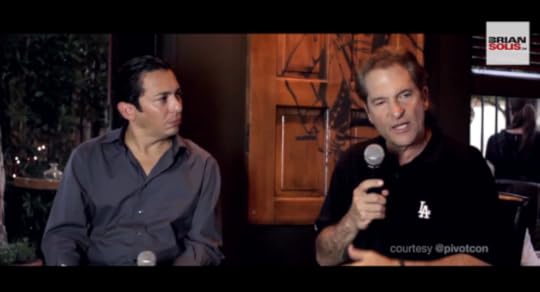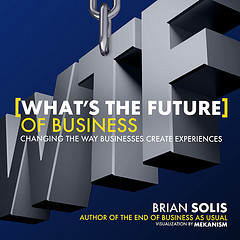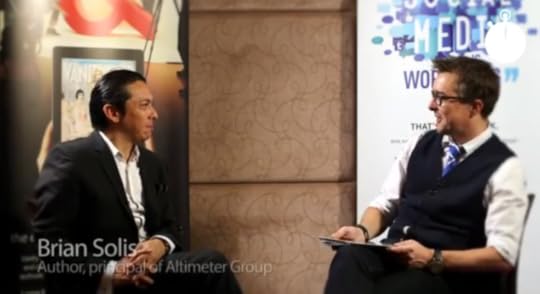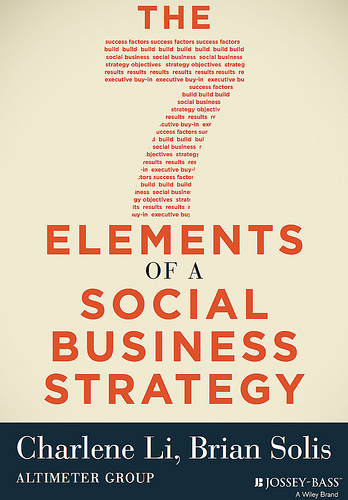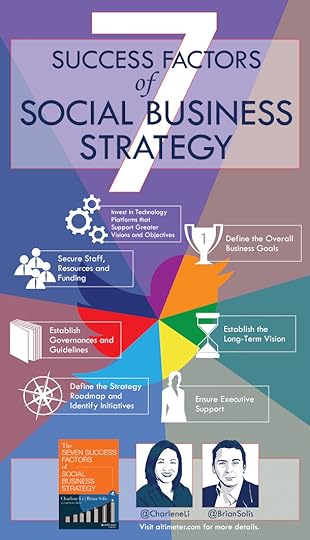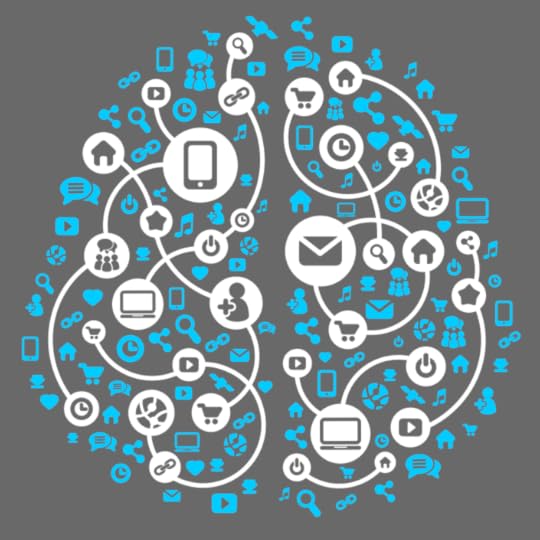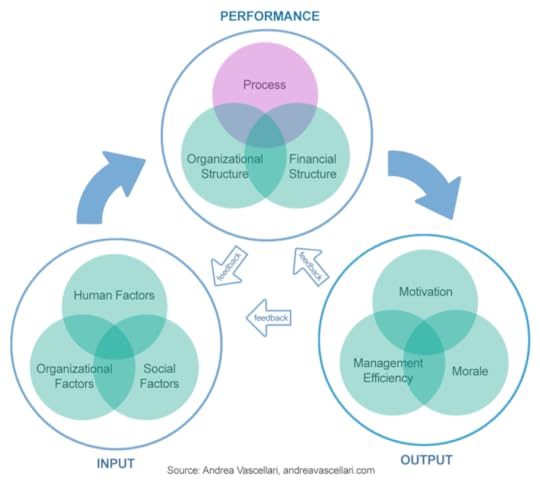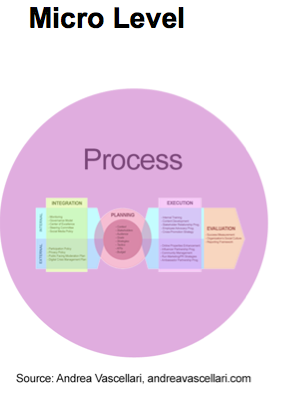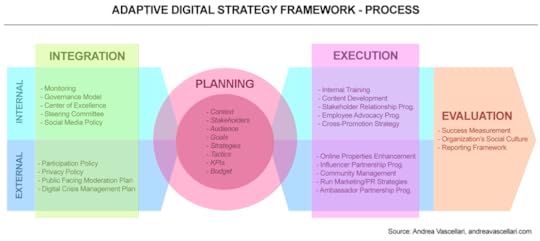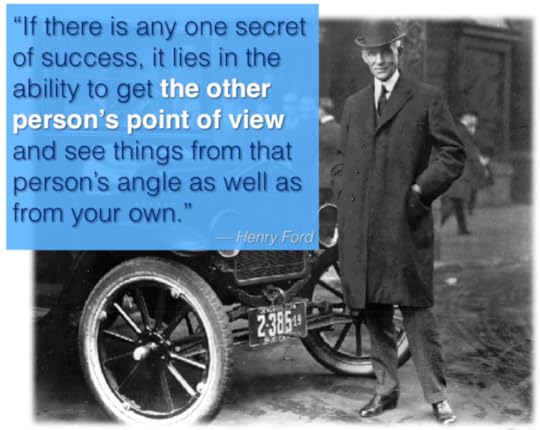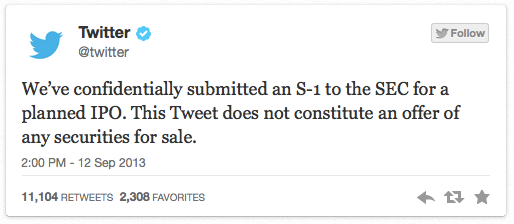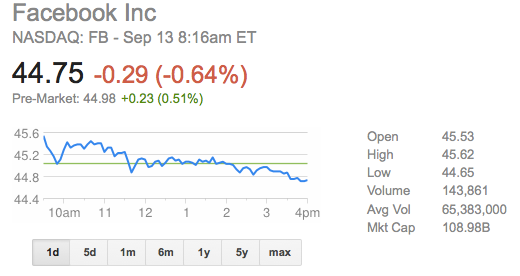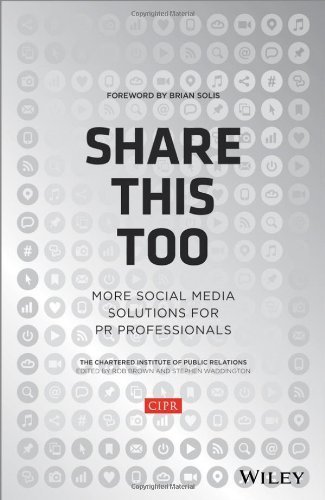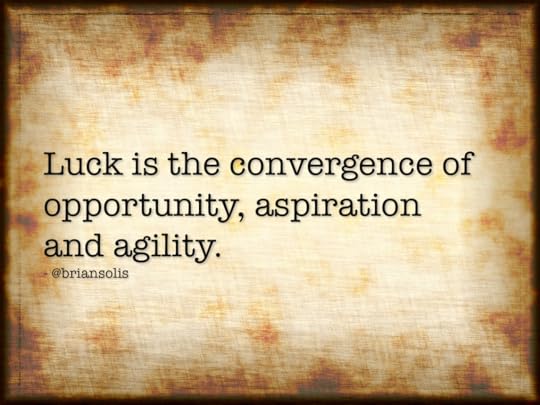Brian Solis's Blog, page 116
October 9, 2013
Peter Guber on Competing for the Future…Now
Peter Guber is one of the most successful yet grounded business leaders I have a pleasure of calling a friend. There are many sides to Peter and chances are you may know him from one of his many distinguished ventures,
- Chairman and CEO of the multimedia Mandalay Entertainment Group
- Past president of Sony Pictures
- Producer of popular motion pictures including Batman, Rain Man, The Color Purple, just to name a few
- Co-owner of the Los Angeles Dodgers and the Golden State Warriors
- Author of the best-selling book Tell to Win
- Professor at UCLA School of Business
In this special edition of Revolution, hosted by the Pivot Conference, Peter and I sat down to discuss his experience in taking traditional business models and modernizing them for the connected economy. Most notably however, Peter also explores the differences in competing for the present versus competing for the future. When you compete for the future, you are simultaneously earning market share through customer relationships while also chasing a vision…a vision that leads you to new horizons beyond the ordinary. Competing for the moment tends to produce a culture of management where scale, efficiencies and optimization reign supreme. The difference is that competing for the future tends to result in a culture of leadership and innovation.
History shows that businesses that focus on a higher purpose outperform those that dwell on the bottom line. Perhaps it’s time for all of us to compete for the future…today.
I think you’ll find Peter’s thoughts refreshing…I also found them inspiring.
Use code “BrianNetwork” to save 30% when you register to attend Pivot in New York.
Shot on location at The Scratch Bar in Beverly Hills.
Subscribe to BrianSolisTV

October 7, 2013
24 Doodles that Visualize This Year’s Pivot Conference Agenda
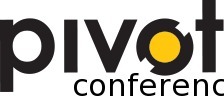
I’m looking forward to seeing you at next week’s Pivot Conference in New York. We published our formal agenda here. Our friends at doodle.ly though, decided to re-imagine the concept of what an agenda could be by visualizing portions of it as doodles! I hope you love them as much as I do…
Click here to see the original gallery.
More about our speakers here.

I’ve created a story arc around the importance of integrated experiences and digital transformation. We’ve hand-picked each of our speakers to share their insights and tales.

We’ll hear @STallingSmith’s side in the Privacy vs. Loyalty Showdown

@Edyson will ask the important questions we’ve not considered in the Privacy vs. Loyalty Showdown

@RayidGhani will talk about the future of Big Data and what’s needed to make it work.

@SLHebner is speaking on Rapid Innovation & The Resilient Organization

@Bre’s talk will focus on the rise of the Maker Economy
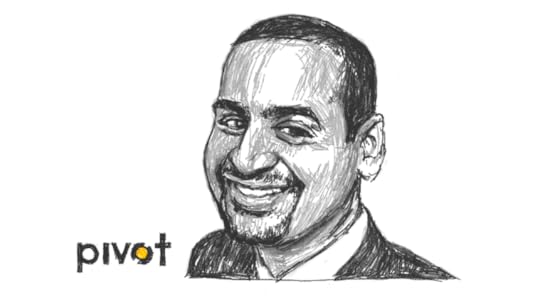
Hear @AnilDash talk about how technology and media is changing our society

The Provocation Report & Action presentation will be delivered by @JeffJarvis

@realdanlyons will be speaking about the co-creation of brands

@RebeccaHarrisDr is speaking about Integrated Experience in the Auto Industry

@ManishKJha will be speaking on Integrated Experiences in Sports
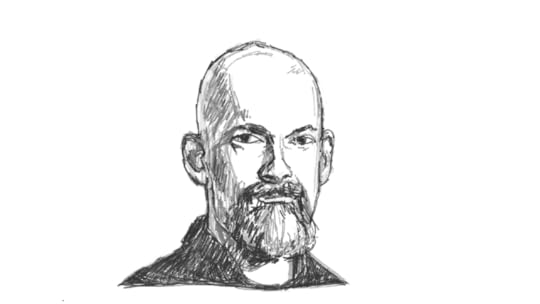
@NealStephenson will share his vision on the future of storytelling in a digital era

@HeadMonster will participate in our Innovate or Die! fireside conversation

@JListerCA will reveal how to activate and measure content

@PeteCashmore will speak to the convergence of media

Mark Anderson will take us on a journey that ties together data, economics, and the fate of nations!

@Rushkoff will highlight the impact of a real-time economy in Present Shock

@KareAnderson will help us better understand behavioral economics
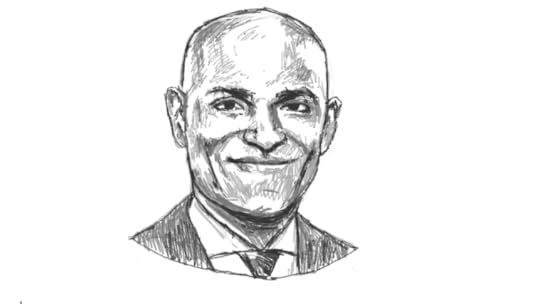
@umang_shah will be presenting on Big Data’s Transformative Power For Business & Society

@ldarcym will share insights on the Millennial generation

@Jcurran716 will reveal traits of The Connected Generation

@Jconway66 will explore “The Content Conundrum: Are Ads Passe or Fundamental?”

@MDScafidi contemplates advertising during “The Content Conundrum”

Anticipating @Samdecker’s portion of “The Content Conundrum”
See you at Pivot!
This is just a glimpse at our incredible speaker lineup at Pivot this year. Learn more about our full roster of visionaries and experts here.
Please consider registering for The Pivot Conference and use code “BrianNetwork” to save 30%.
See you next week!

October 2, 2013
A Conversation with Adobe on the Future of Marketing and Disruption
Earlier this year, I had the opportunity to present in London at a special Adobe event to celebrate the launch of What’s the Future of Business: Changing the way businesses create experiences. Immediately following the presentation, I joined Adobe’s Jeremy Waite to shoot an episode of Marketing Minute.
As the title suggests, each episode is supposed to last 60 seconds. However, this conversation wrapped just shy of 10 minutes. And, I think you’ll see way. As Adobe explains, “In this special extended version of Marketing Minutes, Brian explores the Conversation Prism, YouthQuake and growth hacking.” There’s just no way to cover that many exciting topics in one minute.
In addition, Jeremy asked some tough but important questions:
- How can marketers equip themselves to act on disruptions on the marketplace?
- What are some of the more recent disruptions in the marketplace we’ve seen and based on those disruptions how do you think we as marketers can act on the shift that we’re seeing how people are behaving online and how they’re acting with one another.
- Tell us about the Conversation Prism. What you’ve added to it and what you have changes over the previous three iterations?
- On your blog you talk #Youthquake and Generation C. Give us an overview of what’s happening with the current youth generation, what marketers can learn from youth and what the future might look like.
I do my best to answer them in this extended version of Adobe’s Marketing Minute…
My new book…#WTF
Connect with me: Twitter | LinkedIn | Facebook | Google+ |Youtube | Instagram

September 30, 2013
Visualizing the DNA of a Social Business Via Infographics
Recently, my Altimeter Group colleague Charlene Li and I published an ebook that revealed The Seven Success Factors of Social Business Strategy. To our pleasant surprise, the industry didn’t just react with positive feedback, but also with fantastic infographics that brought the core of the book to life. I wanted to share a few with you here.
Over the years, we studied businesses endeavoring to master social media at various stages. We detailed our findings in our research report uncovering that the most organizations evolve through six distinct stages on their way to social business transformation. After release, we went back through our analysis and found that businesses near or at the sixth stage of evolution collectively shared seven success factors that assisted or expedited advancement. As a result, our book played out less like a traditional business book and instead detailed the DNA of successful businesses as a reference guide, point by point, how each took the next step, and also featured stories and advice from the most advanced companies we could find.
It’s the approachability of the seven strategic factors that seemed to resonate with readers. And to be honest, the same factors can apply to the approach of any important business strategy.
The first infographic I would like to share with you was developed by good friend Vala Afshar (@valaafshar).
In a piece for Huffington Post he wrote, “Houston, we have a problem – a social business strategy problem.”
He continued, “As a CMO and an active user of social media, I am stumped at how the industry still treats social as an experiment. Majority of businesses using social media today have few clear connections between their social activities and business goals. Social media metrics, if they exist, focus instead on engagement activity metrics like ‘likes’ and ‘follows’ and not the actual business value creation like revenue, brand reputation or cost reduction.”
Introducing Vala’s interpretation of our 7 Success Factors of Social Business Strategy…
Recently, Mark Smiciklas (@intersection1) dissected the success factors and explored the very essence of each. He found that these seven factors were indeed seven genetic markers that compiled into the DNA of a successful social business.
In his post at Social Media Explorer, Smiciklas tied the seven factors to narrative gives you an at-a-glance view of your next steps, “Using a blend of research and real world client data, Solis and Li have established a social business strategy DNA – a set of strategic characteristics that are common among successful social organizations.
He went on to ask, “Does your organization have a social business strategy in place? Which of the seven success factors below are proving to be the most challenging?”
Introducing Mark’s interpretation of our 7 Success Factors of Social Business Strategy…
Finally, I would like to share with you a visualization all the way from The Netherlands by Alexis van Dam.
Unlike an infographic, van Dam created an in-depth mind map that outlines each success factor and the corresponding details of each.
The seven success factors of social business strategy mind map by Alexis van Dam from alexida
My new book…#WTF
Connect with me: Twitter | LinkedIn | Facebook | Google+ |Youtube | Instagram

September 27, 2013
The Adaptive Digital Strategy Framework
Guest post by Andrea Vascellari. You can follow him on Twitter @vascellari and visit his website at www.andreavascellari.com.
Today we still see a large number of organizations that keep struggling to align social media and new emerging communication technologies with the overall firm strategy.
Organizations should adapt, look in the mirror and recognize that they need to change because the world has changed. They should embrace new strategic frameworks to avoid getting caught up in the digital hype that hit them every day with new solutions and focus on what can actually help them achieve their business and communication objectives.
Having worked in communications for a while now, I spent a lot of time studying, piloting and learning from many different communication plans. I understood what works, what doesn’t, where digital fits into the current mix and I understood which are the elements of a plan that are, almost constantly, overlooked by organizations.
Eventually over the years I developed, and kept improving, an adaptive framework that would help me planning, executing and managing digital communication plans more effectively and efficiently. I called this framework the “Adaptive Digital Strategy Framework”.
This post explores the overall structure and process of this framework. We will understand how it functions and, indeed, why it’s called “adaptive”.
Structure and Process
In this ever-changing environment characterized by the disruptive effects of the social web, I learned that there’s no “one best way” to organize and lead an organization. Instead, the optimal performance and results depend on the process adopted by the organization to plan and execute its initiatives, and by the multitude of factors that influence it.
This is why I divide the framework in two parts. The first one defines, at a macro level, where the process lies within the overall ecosystem structure. The second describes, at a micro level, how the process actually functions.
Macro Level
Often people make a mistake when they think exclusively about the process used to plan, execute and manage a communications plan without contextualizing it. This macro bird’s-eye view helps us understand where the process is, what is connected to, what factors it is influenced by and what outcomes it generates.
INPUT
Organizational factors: Conditions of the external environment/climate and leadership style.
Human factors: Skills, knowledge and character of who works for the organization.
Social factors: Values, inspiration, behaviors of the groups of people that work for the organization.
PERFORMANCE
Organizational structure: This is about how the different activities, tasks and responsibilities are distributed within the organization.
Process: The brain and heart of our strategic planning & execution. Here we set the objectives, the strategies, the tactics, we verify the results and determine the necessary corrective actions.
Financial structure: It defines how the financial resources are allocated according to the defined objectives.
OUTPUT
Management efficiency: Quality of the management. Is the management capable of achieving a good and tangible output?
Motivation: This is what drives a person to perform a certain action or to pursue a certain objective.
Morale: Do people feel under pressure when they work or do they feel satisfied? You can think it as the “organizational climate” and it has to do with how the work environment is perceived, directly or indirectly, by the employees.
Micro Level
Now that we have a clear view of where the process fits into the equation, let’s zoom in and understand how it actually works.
It’s not easy to plan and coordinate a digital project, there’s so much to consider. The online world has brought new opportunities but also a whole new set of factors that must be taken into account. So, how should we look at these new variables? And, most importantly, which are the elements that we don’t have to forget when crafting our digital strategy plans?
Integration: The focus is on how the organization is structured around social efforts and on how social technologies are integrated with communication channels across the organization.
Planning: Goals are impossible to achieve without a plan. Whether you are working on a PR or a marketing initiative, a good plan is meant to serve as a roadmap. It’s essential for aligning the resources and prioritizing the actions of the organization as it strives to achieve its goals.
Execution: Execution is what actually brings the strategic plan to fruition. This is the result of the planning decisions made by the organization and its team.
Evaluation: The overall process, the financial and the human resources must be evaluated to ensure that the communications function is successful. Accurate measurement is vital for the deployment, maintenance and refinement of ongoing and future projects.
Internal & External: This model includes what needs to be identified, deployed or reviewed at each stage of the development process internally and externally – external communication is as important as internal communication, they are both vital for an organization’s identity and goals achievement.
Adaptiveness of the model
Needs change depending on the nature of the projects (marketing or PR, public or private etc.) so not all the elements I listed are always necessary. For the same reason, keep in mind that you can include additional elements that may have to be taken into account in different/specific contexts.
This is why this framework is defined as “adaptive”. It’s a solid digital strategy framework that keeps transforming in synergy with the present and future evolution of business.
As you can see, in addition to the classic components that characterize traditional communication plans, I included also elements that are starting to play a relevant role in strategic digital communications. Over the next weeks I will release a series of posts on my blog that will explore each element of the “Adaptive Digital Strategy Framework”. In each post I will share my point of view and I will be willing to hear what you think, what you agree or disagree with, what’s missing or what can be changed. It’s going to be a good opportunity to learn from each other and to grow together.
Together with each post of the series I will release also a podcast episode in which you will find the audio version of the post with additional audio commentary about the discussed topics. The name of the podcast is “FIR On Strategy with Andrea Vascellari”, a new podcast under the For Immediate Release (FIR) brand, that offers you guidelines and tips to help you plan, execute and manage your strategic communication plans. The first episode is already available!
Over to you
This framework is based on my experience, what would you adjust based on yours? What do you think about it? Is there something irrelevant? Is something missing? Looking at the sector you are working in, would you approach this differently? Let me know in the comments.
Andrea @vascellari
Image Credit: Shutterstock

September 25, 2013
See the World in 3-D: Dream. Do. Deserve.
Sometimes we just need a change in perspective…a change in how we see the world to shape how the world sees us.
Today is a new day. Embrace it. Make it yours.
Sound familiar?
In many ways, the prospect of a new beginning, a new chance, it’s enough to get most of us out of bed. Optimism becomes the catalyst to take on the day, every day. But, how is this day really any different than yesterday or any day prior? The answer is there. It’s right in front of you and it’s always there. At least, that’s where it was the last time.
Thought it’s never easy to discern, “the answer” is the sustenance that feeds our hunger for possibilities and aspirations. And, there in lies the riddle of life, attempting to delineate between what is meaningful versus what is nothing more than a pleasant or welcomed distraction. It’s not unlike staring at an image only to learn that within the facade exists another vision. The representations were there all along, but somehow, depending on our state of mind, context, and perception, only one initially crystallized.
For example, gaze into the image below. Let’s imagine for a moment that the likeness that comes into view is representative of what’s meaningful to you. Let’s call that the “present” for now. But look again. What you’ll see, if you clear your mind and concentrate on nothing in particular, represents the meaning that unlocks the time ahead. Something that you didn’t see before materializes.

Double Face Illusion by Humberto Machado
Depending on your powers of observation, you may have discerned the image of a person with a round nose, long face, and a slight frown facing left. . Or, perhaps you see the portrayal of a young and striking woman facing right. And, you may in fact see both.
To me, this represents what’s meaningful to me right now and in the future. It’s the constant pursuit of accepting who I am today and investing in who I want to be tomorrow. It’s as poetic as it is striking. What’s meaningful is the beauty of understanding that finding meaning is a journey not a destination or landmark.
We all share a quest for inspiration and validation. But we are seeking more than meaningless platitudes or the sermons by trendy or shallow self-help experts. To grow, we need substance and direction.
There are no easy answers. Even when those answers are in front of you, it takes resolve to see the hidden path behind the course you initially perceive to be the right way. It then takes vision and courage to take the unknown next steps in a direction that most do not see or will not follow.
The distance between who you are and who you want to be is separated only by your aspirations and actions.
Dream
Uncover what is meaningful to you in the long term and what you aspire to become.
Do
Do the things that bring your dreams and your vision to life…even if it’s iterative. It’s the sum of the parts that contributes to the whole and the outcome.
Deserve
As you act, react, and persevere, you discover the secret to defining your own destiny follows the laws of physics, for every action there is an equal and opposite reaction. The more you do, the more opportunities you unlock. You earn what you deserve.
This is your time!
So…Dream. Do. Deserve.
My new book…#WTF
Connect with me: Twitter | LinkedIn | Facebook | Google+ |Youtube | Instagram
Originally published at LifeByMe

September 19, 2013
Announcing This Year’s Theme and Agenda for the 2013 Pivot Conference: The Total Digital Experience
Companies at the leading edge of change are recognizing that Social isn’t the catalyst for transformation, it is a shift in human behavior that changes everything. Social and its partner in change, mobile, can’t be limited to particular campaigns or even to specific departments. This revolution impacts employees and customers and all parts of the enterprise. There are no boundaries now; everything is integrated.
This year at Pivot, we will be exploring topics that reset our perspective of where we are and where we’re going including, The New Emerging Economies, driven by sharing, empathy and co-creation; The Rise of Integrated Experiences; The New Media-Audience Dynamic; Innovation and The Future-Ready Organization; The Confounding Power of Content; and the Long-term Impacts of Social on both business and society.
Agenda
To bring these themes to life, we have assembled a rich array of speakers including GM’s leader of business transformation, the NFL’s head of emerging experiences, Intel’s head of Ambassador program, the CEO of Monster.com, the CMO of Marsh-Mclennon, Kraft Food’s director of corporate affairs. They will be joined by senior execs from Ben&Jerry’s, Southwest Airlines, Pepsi, ADT, SalesForce and many others.
Alongside brands will stand some of the most foreword-thinking executives, analysts, academics and futurists on the Social Revolution. Esther Dyson, David Edelman of McKinsey, Douglas Rushkoff, Mark Anderson of Strategic News Service and Pete Cashmore, CEO of Mashable, will all speak to the Pivot 2013 audience.
As always, Pivot interposes thought leaders from adjacent industries to test and reshape our perspective. Novelist Neal Stephenson will talk about the future of storytelling. Covert Affairs star Chris Gorham, will discuss his new relationship with his audience. AOL co-founder, sports team owner and tech legend Ted Leonsis will show how he is remaking the business of movies.
See the full speaker and agenda list here.
We can’t wait and we hope to see you there with us at Pivot 2013 in NYC on October 15-16. Use code “BrianNetwork” to receive a 30% discount.

Announcing This Year’s Theme and Agenda for the 2013 Pivot Conferece: The Total Digital Experience.
Companies at the leading edge of change are recognizing that Social isn’t the catalyst for transformation, it is a shift in human behavior that changes everything. Social and its partner in change, mobile, can’t be limited to particular campaigns or even to specific departments. This revolution impacts employees and customers and all parts of the enterprise. There are no boundaries now; everything is integrated.
This year at Pivot, we will be exploring, at Pivot this year, such key areas as: The New Emerging Economies, driven by sharing, empathy and co-creation; The Rise of Integrated Experiences; The New Media-Audience Dynamic; Innovation and The Future-Ready Organization; The Confounding Power of Content; and the Long-term Impacts of Social on both business and society.
To bring these themes to life, we have assembled the richest array of speakers in Pivot history. On-stage conversations will include: GM’s leader of business transformation, the NFL’s head of emerging experiences, Intel’s head of Ambassador program, the CEO of Monster.com, the CMO of Marsh-Mclennon, Kraft Food’s director of corporate affairs. They will be joined by senior execs from Ben&Jerry’s, Southwest Airlines, Pepsi, ADT, SalesForce and many others.
Alongside the brands will stand some of the most brilliant thinkers on the Social Revolution. Esther Dyson, David Edelman of McKinsey, Douglas Rushkoff, Mark Anderson of Strategic News Service and Pete Cashmore, CEO of Mashable, will all speak to the Pivot 2013 audience.
And, as always, Pivot interposes thought leaders from adjacent industries to test and reshape our perspective. Novelist Neal Stephenson will talk about the future of storytelling. Covert Affairs star Chris Gorham, will discuss his new relationship with his audience. AOL co-founder, sports team owner and tech legend Ted Leonsis will show how he is remaking the business of movies.
See the full speaker and agenda list here.
We can’t wait and we hope to see you there with us at Pivot 2013 in NYC on October 15-16. Use code “BrianNetwork” to receive a 30% discount.

September 13, 2013
Twitter Files for IPO – What it means for users, investors, and social media
By now you’ve heard that Twitter IPO will fly soon. On the heels of its release of the controversial Conversations feature, Twitter announced, via a Tweet of course, a confidential S-1 filing for a planned IPO. In fact, just last week, I shared with ABC News that we needed to prepare for the inevitable. While many experts are jumping on their platforms to shout that it’s about time, many investors are smirking with clasped hands, understanding of course that in the game of ROI, this is in fact the right time. With over $1.16 billion in funding and an estimated market valuation at somewhere between $9 and $10 billion, Twitter’s patience and timing will serve amongst its greatest assets.
At Altimeter Group, each of the analysts cover Twitter in respect to each of our beats. In this case, I follow Twitter and study its impact on media, society and business. When it comes to an initial analysis of the meaning of Twitter’s IPO, my colleague and Altimeter Founder Charlene Li has us covered. Instead, I’d like to explore what this IPO means in the greater scheme of social media.
See, in addition to the role of an analyst, I’m also a user and stakeholder. I opened my @briansolis account in November of 2006. For me, like you, Twitter is personal. I wrote my first in-depth post about Twitter in March 2007 suggesting that the information network would be the “message heard around the world.” Since then, I’ve worked with or supported notable thought leaders around…
- #hashtags
- The first Twitter wall at conferences
- Early Twitter apps
- The Twitterverse
Now it seems that I’ll have an opportunity to move from stakeholder to shareholder and so will you.
Twitter isn’t Facebook nor is it YouTube or LinkedIn…meaning it’s not a traditional social network or social platform where its inherent benefit and worth is clear upon landing on its home page. It’s an information network that’s a unique blend of broadcast and conversation platform and therefore Wall St. will find it difficult to properly assess its value and growth potential. Let’s not forget that for its first few years of existence, one of the top Google auto-completes around Twitter was, “what is Twitter?”
All of this is enigmatic naturally…or “natch” as my good friend Kara Swisher would say. This is why Twitter hired Mike Gupta as its finance chief. In a recent article in the San Francisco Chronicle, Twitter investor and partner at Benchmark Capital Peter Fenton said of Gupta, “A lot of people are trying to understand, ‘How does this thing work? How does it make money?’ He has a layman’s ability to simplify and express it in a way that’s not overly complicated.”
Gupta will only help.
Twitter is complex to explain to say the least. While its unique technology and fervent userbase are significant, its Twitter role in society that has opened a new window to the world. Twitter is a human seismograph, recording details around culture, politics, trends, and anything else that people find Tweetable. Over the years, Twitter has blossomed into what I call TNN (Twitter News Network) where news no longer breaks, it Tweets. It’s index is powered by human experiences, observations and sentiment. It’s an extension of each one of us and equally a collective consciousness that informs, entertains, distracts, unites, and creates awareness.
Twitter is the last of the big four to go public.
Yes, Twitter is the last of the four big social networks to hit the public market. But that’s an advantage. LinkedIn continually beats estimates and as a result, it stock is on the rise. I’ve always believed that Wall St. understood LinkedIn. I’d argue that many investors and traders managed a personal account and thus understood its value enough to sell it. That wasn’t the case when Facebook hit the market though. As we all know, Facebook’s IPO was marred by a series of setbacks that sent its stock into negative territory almost immediately.
When Facebook officially NASDAQ, its offer price was $38 a share and its valuation was about $100 billion. Facebook was resilient, righting to prove its value to the suits. While its work is far from done, its stock is now 60% north of its opening price following a diligent series of reinforcing and promising earnings calls. Just this week, the stock hit a new high. It doesn’t hurt Twitter that LinkedIn is also roughly 117% up from its opening price either.
So, thanks to Facebook and LinkedIn, Twitter will have a genuine shot at hitting the market on a positive note. Like Facebook, Twitter too is profitable. According to eMarketer, Twitter will bank $583 million in advertising revenue for 2013 and is expected to earn $1 billion in 2014.
Advertising is of course paramount to Twitter. Its promoted products are helping the company not only generate significant revenue, CEO Dick Costolo and co. have the burdensome task of also re-educating Madison Ave. on the future of advertising. The goood news is that under Costolo’s leadership, it’s working.
Like Facebook (that always makes me laugh when I write that), Twitter’s future is tethered to mobile engagement and advertising. On September 9th, Twitter acquired MoPub, a mobile ad exchange/publisher network, for $350 million in stock.
As for its share price and growth rate, we’ll have a chance to see when its S1 becomes public. In the mean time, we’ll wrap up on the words of Mark Zuckerberg. His advice to Costolo was shared on stage this week with Michael Arrington at TechCrunch Disrupt in San Francisco,”As long as they (Twitter) kind of focus on what they are doing, then I think it’s wonderful.” Zuckerberg also shared a personal lesson from Facebook’s IPO, “I’ve been very outspoken about staying private as long as possible … But in retrospect, I was too afraid of going public. I don’t think it’s necessary to do that.”
Connect with me: Twitter | LinkedIn | Facebook | Google+ |Youtube | Instagram

September 11, 2013
The Future of Marketing Has Little To Do With Marketing
While I don’t always have the ability to say yes to writing forewords, I do find time now and then to do so. One of the conditions however is that I’m allowed to share my thoughts, unabridged, with you here. The latest is for a new book, Share This Too, released by Wiley, the publishing house that I also worked with on #WTF, #EOB, #Engage. Thank you to my good friend Paul Fabretti for the opportunity…
The follow up to Share This: The Social Media Handbook for PR Professionals, Share This Too is a practical handbook that outlines the changes taking place in media and marketing. Written by 24 marketing and public relations practitioners, the book covers the state of the media and public relations industry, social media strategy, technology and social networks, online media relations, monitoring and measurement, new skills and expertise, and the future of the industry.
Without further delay, allow me to share this (foreword) too…
The Future of Marketing Has Little To Do with Marketing
Do you realize just how much is changing right now? I promise you that it’s bigger than you think. And your role in this is also much grander than you know or believe. See, disruptive technology, social networks, new influencers, they’re leveling the media hierarchy. The ado of crafting messages, pushing them upon targets, and propagating while attempting to control your story is not only the old way, it’s the very thinking that’s at the forefront of new communications.
This isn’t about the new tools that are before you.
This isn’t about social media or popular social networks.
This isn’t about bloggers and blogging.
Nor is this about tablets, smartphones, and the app economy.
This is about putting the public back in public relations and social in social media and that has nothing to do tools or technology we overly celebrate today. Slow down. Take a breath. While there’s an abundance of change there isn’t a wealth of innovation in processes or methodologies.
The truth is that in a time when we could change everything, we’re running without clarity of direction or vision. We’re not necessarily talking about a revolution as much as we’re conforming revolutionary opportunities into familiar packages. We’re merely taking what we know and applying it to what’s new. In many ways, we’re working against ourselves. But, what’s happening right now is both revolutionary and evolutionary. And in the face of the unknown it is courage the carries us forward and creativity that will open new doors.
Image Credit: Shutterstock
This is a time to rethink the value proposition of marketing and communications and your role within it.
Why is what you do important? Stop. Try that answer again. There’s a reason that your friends and family have a hard time understanding what you do for a living. It’s because the value you think you provide and the opportunity that is presenting itself to you are in fact two very different things. Essentially, your experience carried you this far but it is your vision and ambition that will carry you forward. Think again about the value you offer and the value that others say you deliver.
Allow me to share a slice of my life with you…
I’ve fond memories of surfing. I would grab my board and wetsuit, play great music, and head for the beaches of Southern California. The ocean was my sanctuary as I would surf for recreation, therapy and also tranquility. There was just something about the smell of the ocean, the sound of the waves, and the ability to dance with Mother Nature in a way where she let you lead and you appreciated the momentary gesture.
When snow boarding grew in popularity, I immediately embraced it. I did so because I saw it an art form that was easy to categorize against something familiar. In fact I thought of it as winter surfing and I was wrong to do so. I brought to something new my previous experience and expected it to carry me forward into new territory in a very different environment. What I didn’t bring along was a new and open mindset. I over confidently got on my board, leaned back as you do in surfing and set out to surf that mountain the way I thought I should. I learned, quite painfully, that I did the very thing that you’re not supposed to do. See, in surfing, and skateboarding, your back foot is essentially the rudder. You steer by leaning back and using your back foot to steer your course. In snowboarding, it’s the exact opposite. You lean forward.
All it took was someone to point out that there was a different philosophy to the approach. Once they did, I was as soulful on a snowboard as I was surfing. It just took an open mind, perseverance, and several ice packs.
Today in what is nothing less than an emergent moment for marketing and communications, I see even the best of them leaning back instead of leaning forward. It takes a different philosophy. It takes a different approach. If you take a moment to think about it, everything is different about what’s taking place now and its direction and future is unwritten.
Again I ask. What is the value of what you do? What’s in it for you, your business and those with whom you engage? This time, think about it beyond the company you represent. Think about it from the perspective of the people you’re hoping to reach…every step of the way. People are part of everything you do now and you are also among them.
Value is not boundless. Value in the eye of the beholder and it varies based on the context of the relationship and your desired outcomes. It is relationships after all that form the foundation of business. Marketing and communications are merely enablers for conveying value while also investing in and reinforcing relationships.
What you do and how you do it now serves a higher purpose. This is why I believe that your role in this is much grander than you may realize or believe. Lean forward.


